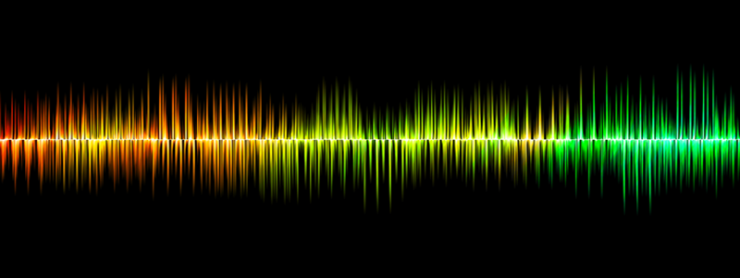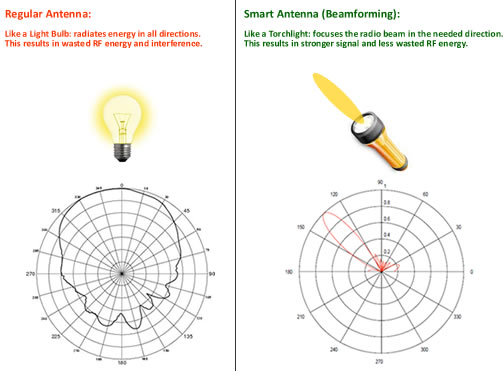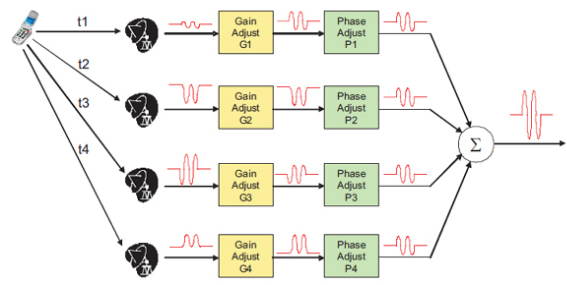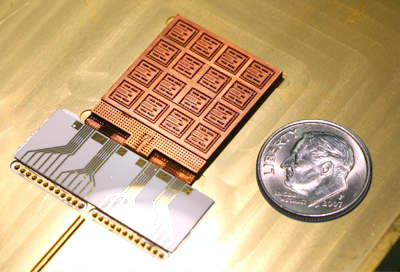Lei Feng network (search "Lei Feng network" public concern) : Author Li Yilei, UCLA doctoral student, Qualcomm (RF group) trainee engineer, said (micro signal: silicon_talks) master pen.
In the previous article ( " How to achieve 10 times faster than 4G? Millimeter wave technology is the key to 5G" ) we introduced how to use millimeter wave technology to obtain more spectrum resources. The next question is how to make full use of these spectrum resources. - How to allow multiple users to communicate but do not interfere with each other. The technical term is called spectrum reuse.

Picture source:Phoenix
Everyone must have had such experience. When there are few people in a room, the mobile phone signal is very good; when many people gather in the room, the mobile phone signal will be worse, and there is no way to call. In the final analysis, this phenomenon is that spectrum reuse is not doing well enough to allocate all necessary spectrum resources to everyone.
There are three classic methods of spectrum reuse: real-time multiplexing (typical applications: China Mobile 2G), frequency-division multiplexing (typical applications: China Unicom 3G) and code division multiplexing (typical applications: China Unicom 3G). An example can be used to illustrate the differences between time division multiplexing, frequency division multiplexing, and code division multiplexing. There are many people in a room who need to talk to each other. To avoid mutual interference, the following methods can be used:
1) The speaking person speaks in turn according to the order (Time Division Multiplexing).
2) People who speak can speak at the same time, but each person speaks different tones (frequency division multiplexing).
3) People speaking use different languages ​​to communicate. Only people who understand the same language can understand each other (code division multiplexing).
Of course, these three methods are combined with each other. For example, different people can communicate in different languages ​​in sequence (ie, China Mobile's 3G TD-SCDMA). However, these three classical multiplexing methods cannot fully utilize spectrum resources. They either cannot communicate with multiple users at the same time (TDMA) or cannot use the entire spectrum resource (FDMA), or require multi-bit symbols to transmit 1 bit. Data (CDMA).
So, is there a way to overcome the shortcomings of the above multipath approach, allowing multiple users to use all spectrum communications at the same time? Let us think first. What happens if we speak in the same language and in the same language in a room?
Obviously, in this case, mutual interference will occur. This is because the signal will be transmitted in all directions, so one person will hear the voice of multiple people and cannot communicate effectively. However, if we let everyone who speaks use a communicator so that the sound only travels in a certain direction, it will not interfere with each other.
In wireless communication, it is also possible to try to make electromagnetic waves propagate in a specific direction, so that users in different spatial directions can simultaneously use all the spectrum resources to communicate without interruption, that is, space-division multiple access (SDMA). Another advantage of SDMA is that it can reduce the waste of signal energy: When the wireless signal is radiated in space to the omnidirectional, only a small part of the signal energy is received by the receiver as a useful signal. Most of the signals were not received by the corresponding receiver but radiated to other receivers as interference signals.
When SDMA is used, the signal energy is concentrated in a specific direction, on the one hand, the interference to other receivers is reduced; on the other hand, the waste of signal energy is also reduced.
In 5G communication, SDMA is a massive multiple-input multiple-output (MDMA) in which a large-scale transmit antenna and a receive antenna array are used at the transmitting end and the receiving end, respectively, so that signals are transmitted through a large-scale antenna array at the transmitting end and the receiving end. And receiving, thereby improving communication quality) is an important example of technology applications, and the technique of transmitting radio signals (electromagnetic waves) only in a specific direction is called beamforming.
With beamforming, many buddies can swipe their mobile phones online at the same time without worrying about signal interference.

The word "beam" looks strange, but everyone must be familiar with the "beam". When a beam of light is in the same direction, it becomes a light beam, similar to the light emitted by a flashlight. Conversely, if light is radiated in all directions (such as light from a light bulb), it cannot form a light beam. Like the beam, when all waves are traveling in the same direction, beams are formed.

The beam of light in life, the beam is also a kind of beam
Engineers have been using beams for a long time. In World War II, engineers have used beams in radars. The radar detects the position of all targets in the entire space by scanning beam directions.
Another example is satellite communication, which is the "pot antenna" commonly used in satellite television in our lives. The distance between the satellite and the ground receiving antenna is very long and the signal attenuation is very large, so the satellite signal has very small energy when it reaches the ground. Therefore, we need to find ways to collect every signal energy emitted by the satellite. When the satellite's signal is radiated in space, most of the energy is not received by the ground antenna but is wasted. To avoid this waste, we use beams when we receive and transmit satellite signals. In this way, the emitted electromagnetic wave signals are concentrated in one direction. As long as the receiving antenna can be aligned in this direction, as many signals as possible can be received.

The traditional applications of beams are radar (left) and satellite communications (right)
How to implement beamformingThe beam is simple to implement , as long as opaque material is used to block light in other directions. This is because visible light travels approximately in a straight line, and its diffraction ability is weak. However, in a wireless communication system, signals exist in the form of electromagnetic waves having strong diffraction capabilities. Therefore, it is not possible to use beam generation methods to realize beam forming, but other methods must be used.
Wireless communication electromagnetic wave signal energy is radiated from the antenna into the air at the transmitter and received by the antenna at the receiving end. Therefore, the direction of electromagnetic wave radiation is determined by the characteristics of the antenna. The directional characteristics of the antenna can be described by the radiation pattern (ie, the amplitude of the signal transmitted by the antenna in different directions in space).
The radiation pattern of an ordinary antenna has very weak directivity (ie, the radiation intensity in each direction is similar, similar to a light bulb), and the most basic method for forming a beam is to use an antenna with strong radiation directivity (ie, aiming radiation in one direction). , like a flashlight).
However, such antennas are often bulky and difficult to install on mobile terminals (think about what a pot antenna would look like on an iPhone). In addition, beamforming needs to change the direction of the beam with the relative position between the receiving end and the transmitting end. The traditional method of forming a beam using a single antenna requires turning the antenna to change the direction of the beam, which is clearly not possible on a mobile phone. Therefore, a practical beamforming scheme uses a smart antenna array.

Ordinary antenna (weak direction) and smart antenna array (strong directionality)
The principle of smart antenna arrays is not complicated. When the two waves generated by the two wave sources interfere with each other, some waves in the two directions mutually reinforce each other, and two waves in some directions cancel each other exactly (see the following figure).

In beamforming, we have many wave sources (ie, antenna arrays). By carefully controlling the relative delays and amplitudes of the waves emitted by the wave source, we can make the electromagnetic wave radiation energy concentrated in one direction (ie, the receiver is The location of the electromagnetic wave radiation energy is small (that is, it reduces the interference to other receivers).
In addition, the direction of the antenna radiation can be achieved by changing the relative delay and amplitude between the wave sources, and the relative position between the transmitting end and the receiving end can be easily tracked.

Beamforming System Architecture
Beamforming and millimeter waves are a perfect matchCurrently beamforming has been used in WiFi routers with multiple antennas. However, it is not possible to install multiple antennas in the WiFi band like a router because the size of the antenna is too large.
The size of the antenna is determined by the wavelength of the electromagnetic wave signal. The wavelengths of the electromagnetic wave of WiFi and the current mobile phone band can reach more than ten centimeters, so it is difficult to integrate such a large antenna on the mobile phone. To solve this problem, we can combine beamforming and millimeter wave technology.
The millimeter wave band wavelength is about one-tenth of the WiFi and mobile band wavelengths, so it is possible to integrate multiple millimeter wave antennas into a mobile phone to achieve beamforming in the millimeter wave band. Beamforming and millimeter wave technology can be described as a perfect match. Using millimeter waves can bring greater bandwidth to signal transmission. Beamforming can solve spectrum utilization problems and make 5G communications even more powerful.

Millimeter-wave antenna array is small and can be installed on a mobile phone
ConclusionBeamforming can concentrate the signal energy in the direction of the receiving end, thereby improving spectrum utilization efficiency. Beamforming combined with millimeter-wave technology allows the communications system to have high bandwidth and support simultaneous communication for a large number of users, thus making the 5G system even more powerful.
5G Communication Technology Series Articles:
"5G communication technology interpretation | how to achieve 10 times faster than 4G? Millimeter wave technology is the key to 5G"
"Interpretation of 5G Communication Technology | Massive Antenna Array Technology"